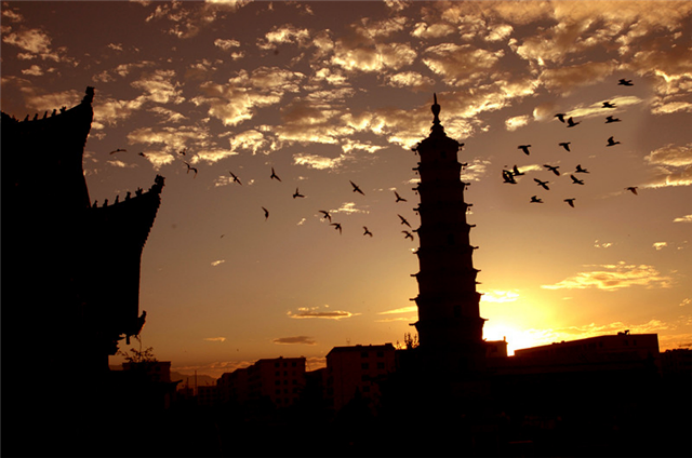Wuwei: Legend of the Heavenly Steed from an Ancient Silk Road City
Wuwei, historically known as Liangzhou, is nestled in central Gansu Province at the eastern end of the Hexi Corridor. This 2,000-year-old ancient city served as a vital hub for cultural exchange between ancient China and the Western Regions along the Silk Road, leaving behind a rich legacy of historical and cultural treasures.
From the breathtaking natural landscapes to its profound cultural heritage, Wuwei captivates with its unique charm—embodied in the Bronze Galloping Horse of the Leitai Han Tomb, the ancient scripts of the Western Xia Stele, and the Buddhist artistry of the Tiantishan Grottoes. Each relic whispers tales of Wuwei's glorious past.
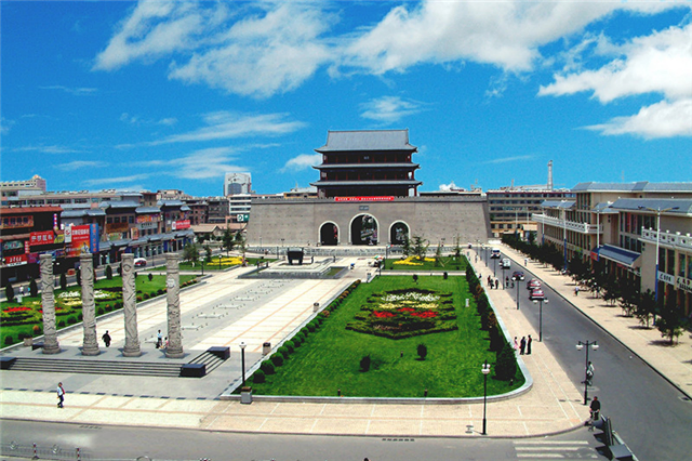
Wuwei: History and Present of a Silk Road Jewel
Situated as the gateway to the Hexi Corridor, Wuwei once served as the ancient capital of the "Five Liang Dynasties." The frontier essence of this land was immortalized by Tang Dynasty poet Wang Zhihuan in his famed verse: "Why should the Qiang flute lament the willow? The spring breeze never reaches the Jade Pass."
With its arid climate and abundant sunshine, Wuwei boasts diverse tourism resources—ranging from the majestic grandeur of deserts and Gobi to the serene beauty of oasis farmlands. Today, the city preserves the weathered imprints of the ancient Silk Road while radiating the vitality of a modern urban center, making it an ideal destination for history enthusiasts, nature explorers, and cultural travelers alike.
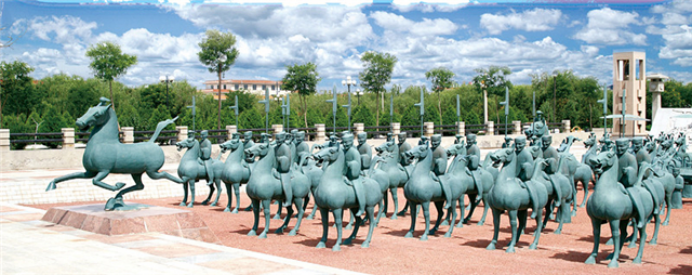
Leitai Han Tomb (Excavation Site of the Bronze Galloping Horse)
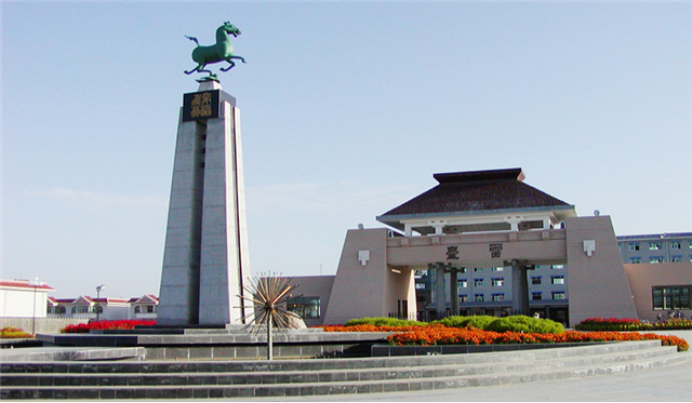
Leitai Han Tomb
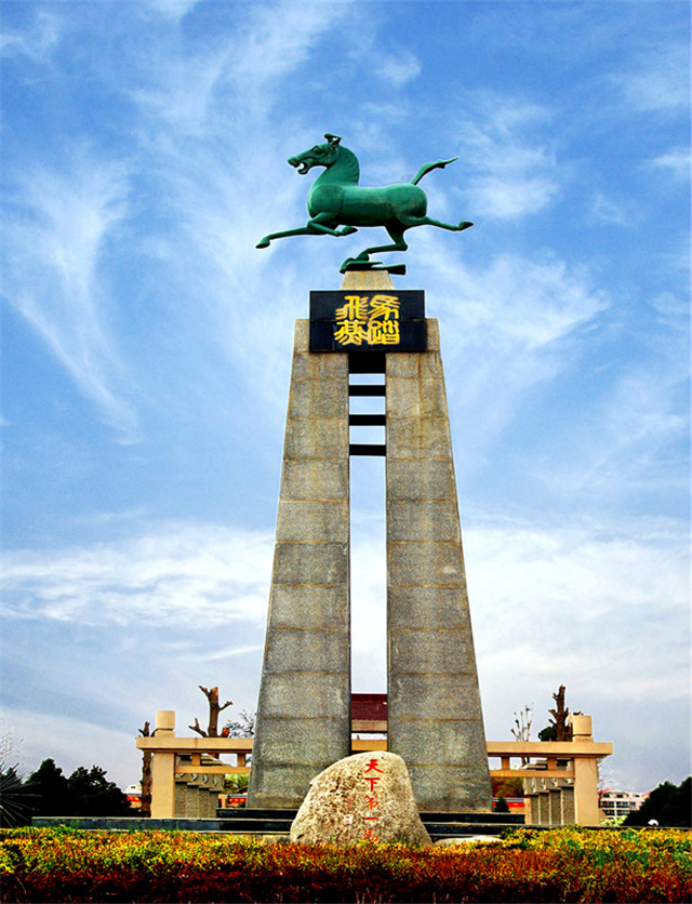
The Leitai Han Tomb gained global acclaim for yielding the world-renowned "Horse Treading on a Swallow" bronze statue. This late Eastern Han Dynasty burial site epitomizes the majestic Han-style artistry of the Hexi Corridor.
Architectural Marvel: The tomb's inverted-funnel shaped vault, built with brick arches, showcases the extraordinary engineering prowess of the Han era.
Processional Grandeur: Rows of bronze chariots and cavalry figurines flanking the passageway recreate the grandeur of aristocratic processions.
Iconic Artifact: The Bronze Galloping Horse, captured mid-stride with three hooves suspended in air, merges mechanical precision with artistic brilliance. The swallow beneath its hoof embodies the poetic notion of "celestial steed soaring beyond mortal realms"—a perfect symbol of East-West cultural exchange along the Silk Road.
Above the tomb stands the Leitai Taoist Temple Complex from the Ming-Qing period, with its vermilion roofs and jade-green tiles. Ascending the platform offers panoramic views: the snow-capped Qilian Mountains to the north and the timeless pulse of the ancient city to the south—where history and modernity intertwine in an eternal poetic tableau.
Wuwei Confucian Temple (Largest Confucian Temple Complex in Northwest China)
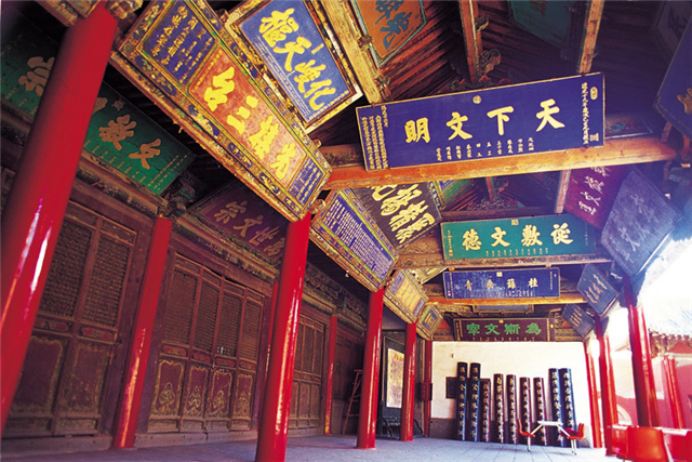
As the largest and best-preserved Confucian temple complex in Northwest China, Wuwei Confucian Temple stands as a testament to the enduring legacy of Confucian civilization along the Silk Road.
Architectural Splendor:
The Ming Dynasty stone-carved coiling dragons on the Lingxing Gate appear lifelike, while the gilded chiwen (mythical roof ornaments) on the nine-ridged Xieshan roof of the Dacheng Hall glimmer under the reflected light of the Qilian Mountains' snow. Inside the hall, the golden plaque inscribed "Eternal Teacher of All Ages" and the 72 painted statues of Confucius' disciples outline a complete lineage of Confucian orthodoxy.
Cultural Treasure:
The temple houses the extraordinary Western Xia Stele—the most intact existing bilingual stele featuring both the tadpole-like Tangut script and standardized Chinese regular script, embodying the harmonious blend of multi-ethnic cultures.
Literary Legacy:
The Wenchang Palace displays 44 Ming and Qing wooden plaques bearing inscriptions like "Civilization Under Heaven" and "The Essence of Culture Resides Here." The poetic couplets adorning its vermilion pillars resonate with the voices of literati through the ages, ensuring this frontier temple remains a vibrant custodian of Chinese cultural spirit.
Tiantishan Grottoes (The Origin of Chinese Cave Temples)
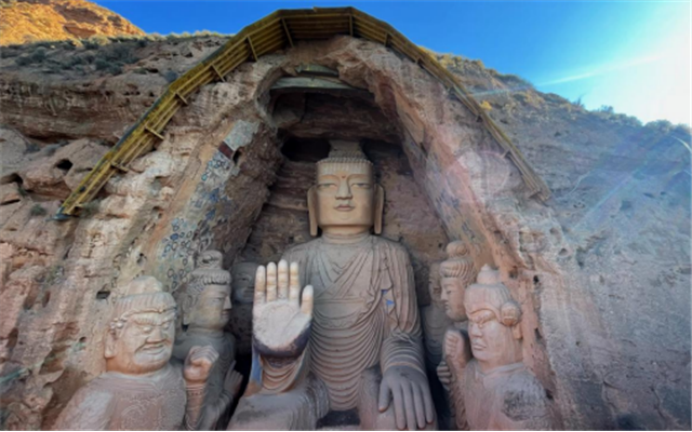
Sakyamuni statue in Tianti Mountain Grottoes
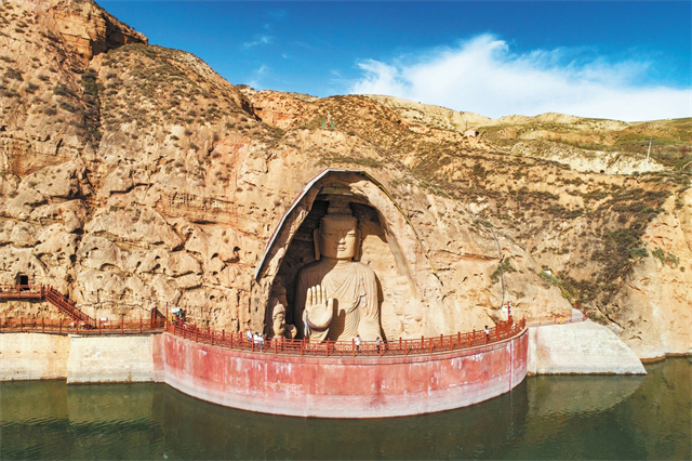
Carved during the Northern Liang period, the Tiantishan Grottoes pioneered the "Liangzhou Style" of Chinese cave art, directly influencing the Yungang and Longmen grottoes. Thirteen niches cascade along the mountain slope, featuring as their centerpiece a 28-meter-tall Tang Dynasty Maitreya Buddha seated in lotus position—its downcast eyelids radiating compassion, with robe folds cascading like water waves. The statue merges with the azure reservoir below, creating the transcendental unity of "mountain as Buddha, Buddha as mountain."
Artistic Highlights:Northern Wei Murals: Surviving fragments showcase celestial apsaras with wind-swept ribbons, where cinnabar red and mineral green pigments retain their brilliance after 15 centuries, revealing the fusion of Gandhara and Central Plains artistic traditions.
Historical Significance: More than just evidence of Buddhism's eastward journey, these cliffs embody a carved chronicle of cross-civilizational dialogue. The shimmering waters of the Huangyang River still seem to echo with 5th-century monks' chiseling sounds.
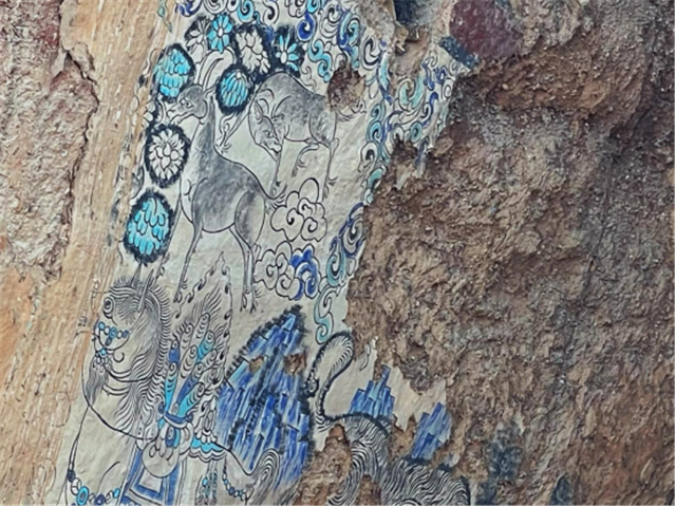
Cave murals
White Pagoda Temple (Historical Witness to Tibet's Inclusion in China)
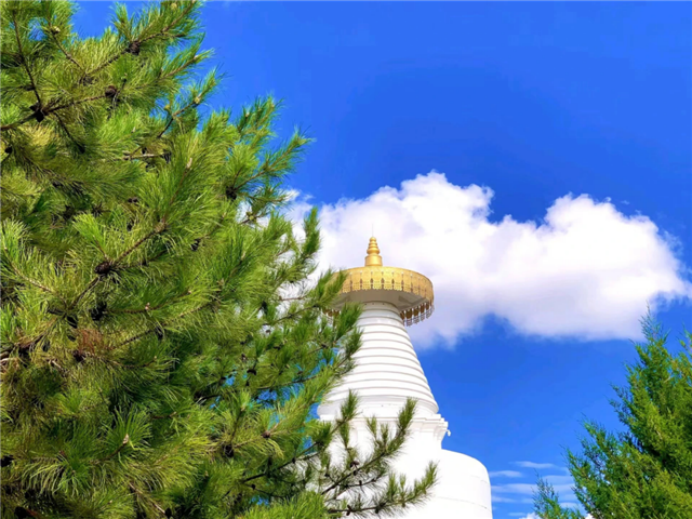
This ancient monastery of the Sakya school of Tibetan Buddhism earned its place in history through the 1247 "Liangzhou Alliance" — where Sakya Pandita and Mongol Prince Köden established the agreement that laid the foundation for Tibet's incorporation into China's territory.
Architectural Marvels:The 35-meter-tall Yuan Dynasty white pagoda resembles a sacred khata scarf from the snowlands, its dome adorned with sun-moon jewels and thirteen-tiered spire reaching skyward. Sanskrit-Tibetan inscriptions remain visible on the pagoda's base reliefs.Ninety-nine smaller pagodas form a constellation-like array, symbolizing the ethnic unity of "one family under heaven."
Historical Legacy:The Great Scripture Hall's murals vividly depict the alliance: Sakya Pandita holds a vajra scepter, Prince Köden unrolls an imperial decree, and Han, Tibetan, and Mongol envoys jointly compose the "Liangzhou Alliance Scroll" — a powerful visual testament to this pivotal moment in Chinese history.
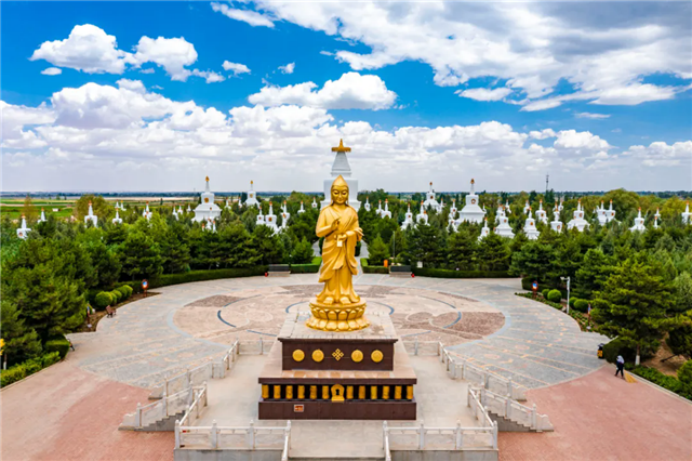
Desert Park (Experience the desert style)
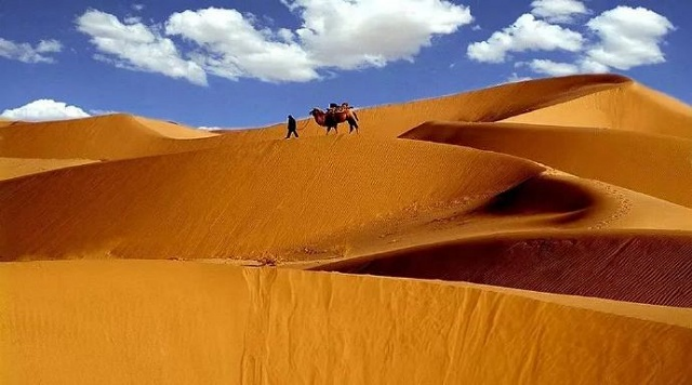
Wuwei Minqin Suwu Desert
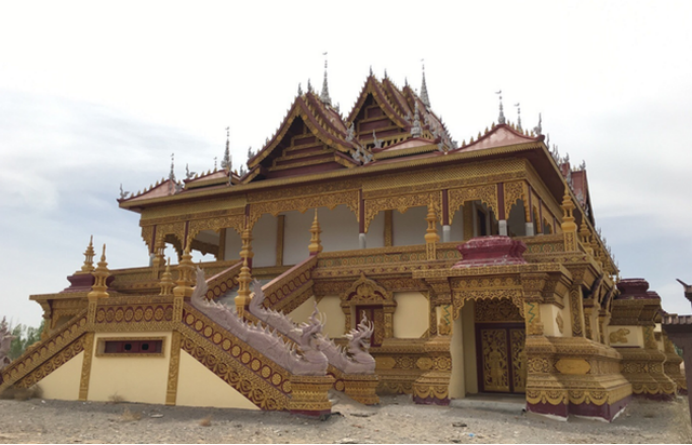
Wuwei Desert Park
China's first desert theme park is a clever blend of vast desert and artificial oasis, interpreting the ecological legend of ‘sand retreating and people advancing’. The undulating sand dunes are like solidified golden waves, the Shuttle Bushes and Jujube trees form a green defence line, and the crescent-shaped artificial lake reflects the snowy peaks of the Qilian Mountains, forming a strange contrast between the ‘lonely smoke in the desert’ and the ‘colour of water and sky’. The silhouette of camel slowly crosses the sand ridge, continuing the millennium imagery of the Silk Road; in the Sand Botanical Garden, the gnarled branches of poplar and the sea of red willow dance together, interpreting the resilience and splendour of life. When the sun sets, the whole park becomes the ‘Golden Sands Pavement’ in the Mogao Caves frescoes, and the camel bells and the sound of the wind play a long song of the border.
Kumarajiva Temple: A Millennium-Old Sanctuary of Buddhist Wisdom on the Silk Road
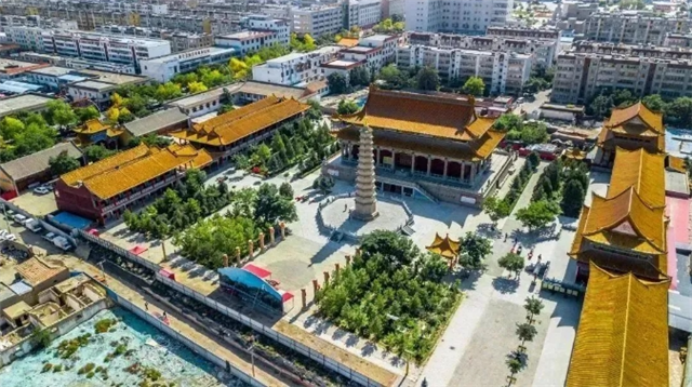
This ancient temple, named after the renowned Central Asian monk Kumarajiva, embodies the historical process of Buddhism's Sinicization. Though rebuilt multiple times since its original construction during the Later Liang Dynasty (386-403 AD), the temple continues the millennium-old legacy of its "Thatched Hall Scriptural Translation" tradition.
Architectural Highlights:The imposing twelve-cornered Kumarajiva Stupa stands adorned with glazed tiles depicting flying apsaras, while its base is engraved with verses from the Diamond Sutra—testament to the legend of the translator's "unburned tongue relic."In the Mahavira Hall, the statue of Kumarajiva holds scripture scrolls, his expression capturing the wisdom and compassion he embodied while translating the Lotus Sutra in Wuwei.
Cultural Legacy:The shaded stele corridor, sheltered by ancient locust trees, displays poetic inscriptions by literati across dynasties alongside reliefs of translation scenes. The chanting of sutras still carries the eternal resonance of "Form is emptiness" (rupa śūnyatā), preserving the temple's profound connection to Prajñā (wisdom) teachings.
